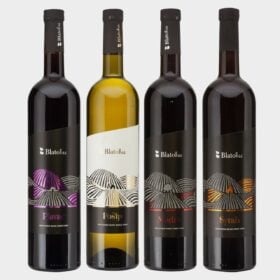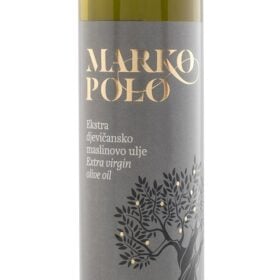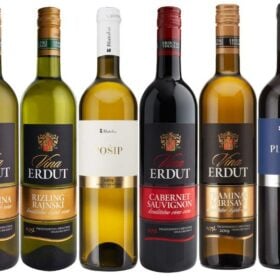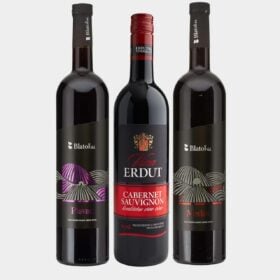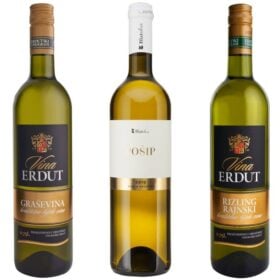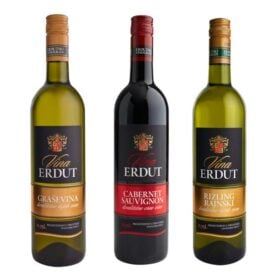A winemaker can apply for a Protected Designation of Origin (PDO) or a Protected Geographical Indication (PGI) to increase the value of his wine and protect it from fraudulent activity. Protected Designation of Origin guarantees that all the ingredients used in the production of the wine have been grown and produced in a particular region, while Protected Geographical Indications ensure that the wine has a special characteristic related to its geographical origin.
Protected Designation of Origin (PDO) and Protected Geographical Indication (PGI) are two different certification labels used in the European Union that guarantee that a product has been traditionally produced, processed and prepared in a specific geographical area.
Content
Quality marks
Obtaining either label helps to distinguish wines from independent producers from mass-produced wines, giving the product credibility and better protection against abuse. In addition, these labels can better inform consumers about what they are buying, which ultimately increases confidence in the brand and the product.
Protected Designation of Origin (PDO) and Protected Geographical Indication (PGI) are two different categories of wine that guarantee its origin and quality. Wines labeled Protected Designation of Origin come from a specific geographic area with a long history of viticulture. Protected Geographical Indication wines are made in other areas, but have the same characteristics as their traditional counterparts.
Both types of wine must meet certain requirements to be classified as such, including grape variety, production methods, aging periods, and more. As consumers become increasingly aware of where their food comes from and how it is produced, these two labels provide assurance that what they are buying is authentic and of high quality.
Strict application procedure
The application process for both Protected Designation of Origin and Protected Geographical Indication is similar, but also includes several other criteria that must be met – such as unique production methods or traditional knowledge. During this process, an official certificate is obtained from the European Union Quality Assurance Institute, stating that all relevant standards have been met and thus confirming certification.
In addition, any producer who successfully obtains one of these labels must adhere to strict regulations regarding production methods and also regularly check quality in order to maintain their label rights.
In short, obtaining a Protected Designation of Origin or a Protected Geographical Indication benefits both winemakers and wine consumers; it ensures quality assurance and at the same time creates confidence in the market, which ultimately leads to consumer satisfaction.
Wine of a protected designation of origin (PDO)
A protected designation of origin is a system to identify and protect geographical indications for wine production. To be able to give a wine the status of protected designation of origin, the wine must meet certain conditions:
- Wines with a protected designation of origin are wines made according to a specific and recognized method within a certain geographical area. All grapes used for the production of this wine come from the same geographical area.
- To guarantee the authenticity and quality of the final product, wines labeled with a protected designation of origin must be processed and prepared using traditional techniques, which often require the use of specific regional ingredients. In addition, these techniques are strictly regulated and monitored by local authorities to ensure compliance with all applicable laws.
Wines of Protected Origin are wines that are made in specific geographic areas and have gone through a rigorous process to earn the right to label their product with a "Protected Designation of Origin". This type of wine is usually associated with higher quality, as they production process are carefully monitored to ensure that their grapes and other raw materials meet certain standards and quality levels. This type of certification is particularly important in the world of wine today, as it guarantees consumers that what they are drinking is really of good quality.
Every part important in wine making
Wines of protected origin must be produced entirely in the area for which they received their status. Every element, from grape growing and harvesting, fermentation, aging, bottling and labelling, must take place within the permitted area. This creates a strong bond between it "terroir" (a French term meaning 'taste of the place') and the final product. Indeed, the unique climate and soil conditions give each bottle distinct flavors that cannot be reproduced elsewhere.
The official protected origin status of a particular wine can often be found on the label, indicating which body has certified the wine to their standards of excellence. This can give consumers more confidence in purchasing high-quality bottles because they know exactly where the wine comes from and how it is made. In addition, a protected provenance can protect manufacturers from imitations from other areas that try to copy their product style or even the brand name itself.
In general, wines with protected origin status have undergone an extensive review process by government or private agencies that verify quality control measures and guarantee authenticity before being awarded such an honorable award. Because so much work goes on behind the scenes for every bottle produced in these areas, these types of wines are truly special treats, meant to be tasted by connoisseurs around the world!
Protected Geographical Indication (PGI) wine
Wines are special types of wines that come from a particular area, meaning they have special significance to the local region. The production and labeling of these wines must strictly adhere to the requirements of the specific geographical indication, ensuring quality and authenticity
To be able to give the wine a protected geographical indication certificate, it must meet a number of conditions:
- Protected Geographical Indication wines are wines produced, processed or prepared in a specific geographical area. To qualify for protected geographical indication status, at least 85% of the grapes used for the wine must come from the same area.
- The actual production process of Protected Geographical Indication wines is strictly regulated to ensure that they are made with local influences and that they "terroir" and accurately reflect the traditions of the area. Such wines are subject to higher quality standards than other types of wine, and their authenticity must be verified by a designated regional certification board before being allowed to use the Protected Geographical Indication designation.
Unique character
Geographical indication wines are wines that are considered to have a unique character, quality and reputation due to the specific location where they were produced. Geographical indication wines are protected by international law and are given an official designation specific to the country where they are made. These designations indicate that the wine has regional or traditional characteristics related to its geographical origin.
For example, a French wine labeled “AOC” (Appellation d'Origine Contrôlée) must meet certain standards of the French wine industry in order to qualify for this label and be allowed to use it on the product. In addition, wines with a geographical indication are also subject to restrictions that further ensure their uniqueness and authenticity, such as certain types of grapes used, aging requirements, and cultivation techniques used during production.
As a result of these strict regulations, Geographical Indication wines are highly sought after due to their superior quality and limited availability. Consumers benefit from this protection because they can be confident that what they are buying is truly authentic and of superior quality compared to other non-GI wines.
Difference between both features
The Protected Designation of Origin certificate guarantees that the product is made from ingredients that come exclusively from the designated region, while the Protected Geographical Indication certificate certifies the geographical origin of the raw materials used for production. Both ensure that only products with local characteristics can be sold under their respective names.
Protected Origin and Protected Geographical Indication are two terms used in European Union law to indicate a product that comes from a specific place, region or country. Protected origin refers to agricultural products, foodstuffs and certain industrial products that have been traditionally produced, processed and prepared in a specific geographical area.
On the other hand, a Protected Geographical Indication (PGI) is an EU-wide certification awarded to products whose quality and reputation have been shown to be linked to the area of production.
Foodstuffs
Agricultural products with Protected Geographical Indication status generally have unique characteristics due to the particular environmental conditions in which they are produced; for example, the grapes used for Champagne may only come from designated vineyards in the Champagne region of France if they have Protected Geographical Indication status.
Similarly, foodstuffs must possess a “specific quality, reputation or other characteristic” attributed to their geographical origin; the Parmigiano Reggiano cheese must be made in the provinces of Parma, Reggio Emilia, Modena or Bologna Italy according to strict standards set by Italian law.
The label of protected origin (PDO) is another type of EU-wide certification that also guarantees the authenticity and quality of certain foods and drinks, as it guarantees that all stages of production take place in a specific area.
- For example, products such as Parma ham can come from pigs raised in seven provinces around Parma;
- Cava sparkling wine from selected vineyards between Barcelona and Valencia;
- Roquefort-cheese which is made exclusively from sheep's milk from the French Auvergne;
- Scotch whiskey distilled from malted barley grown in Scotland, all qualify for protected origin status.
Obtaining Protected Origin or Protected Geographical Indication certification for agricultural products usually requires compliance with local regulations on agricultural practices, such as crop rotation, fertilization techniques and animal husbandry standards.
In addition, producers who have a protected geographical indication or also have to go through strict testing procedures before they can be recognized by the EU authorities. This provides assurance that these products will maintain their high level of quality over time, thanks to the rigorous monitoring procedures carried out by regulatory bodies across Europe.
Quality requirements for protected origin and protected geographical indication
Protected Origin and Protected Geographical Indication (PGI) labels are quality labels awarded to products that have a strong link with a particular area. To be eligible for a protected geographical indication label, a product must meet certain quality requirements
For example, to get the label of protected origin, the raw materials or the main production steps of the product must take place in a certain geographical area. In addition, these raw materials or production steps must be traceable to the geographical area, i.e. there must be a clear link with them. In addition, the product must have specific characteristics inherent to production in that area. This can be about taste, aroma, texture and other characteristics that may depend on the climate or soil conditions of the location
The “Protected Geographical Indication” label is another type of quality label awarded to products with a unique and traditional production method related to their region of origin. To earn this label, a product must meet certain criteria, such as that the main ingredients come from the identified geographical area and that it has specific characteristics related to the production process in that region.
Traditional production methods are important
In addition, the production processes and methods must be unique to that region and handed down from generation to generation. Even if all the ingredients used in the production of the product do not come from that specific region, but are closely associated with it, a Protected Geographical Indication label can be awarded if the producer meets all the other criteria mentioned above.
In short, both Protected Origin and Geographical Indication labels require products to have certain qualities, such as traceability to the geographical origin, certain inherent characteristics due to the origin, or certain production methods or processes that are traditional and characteristic of the region in question. These requirements guarantee high quality standards for labeled products so that consumers can enjoy them without worrying about the safety or authenticity of these products before they are purchased on store shelves.
Croatian wine with the quality labels
Croatia is known for its quality wines with a Protected Designation of Origin or Protected Geographical Indication, an official status granted by the European Union to ensure that only certain types of wines are labeled and produced in a specific region. These wines must meet strict criteria to be designated as belonging to their region, including production methods and types of grapes used.
Wines with a protected designation of origin from Croatia are made with traditional winemaking techniques passed down from generation to generation and are very faithful to their own specific "terroir" – the unique combination of natural elements that give the different regions their unique flavor profiles.
The most famous areas in Croatia where wines with the quality label protected designation of origin are made are:
- Dalmatia (Posip, Plavac Mali, Maraština / Rukatac and Babić);
- Istria (Malvasia Istarska and Teran);
- Slavonia (Graševina);
- Kvarner (Žlahtina);
- Hrvatsko Zagorje (Škrlet).
Croatia's climate makes it ideal for growing a variety of grapes for making both red and White wine. The warmer temperatures near the coast provide perfect conditions for the ripening of red varieties such as Plavac Mali en Babić, while the cooler inland temperatures provide excellent conditions for white varieties such as Graševina.
This variety of climates allows winemakers to produce a wide variety of styles from crisp dry white wines, floral rosés, balanced sparkling wines to full red wines with a lot of structure and complexity.
The quality of Croatian Protected Designation of Origin wines has gained worldwide recognition in recent years for their exceptional flavor profile. Many experts agree that these wines offer incredible value for money given the complexity they can achieve at such low prices compared to other top regions.
Traditional quality features of wine from Croatia
Wine with a Protected Designation of Origin or Protected Geographical Indication can be identified by certain traditional characteristics used to inform consumers about the production and aging process, colour, place of origin or a notable event in history. These kinds of characteristics indicate that it concerns a certain type of quality wine.
A number of Croatian wineries have won international awards for their efforts to make great PDO wines – some have even achieved cult status among wine connoisseurs worldwide. Whether you enjoy a light White wine from Istria or of a deep dark red vintage from Dalmatia – whatever your preference – there is certainly something special among the selection of Croatian wines with a protected designation of origin. Also view the overview with the most popular Croatian white wines en most popular Croatian red wines.
Characteristics of protected origin for quality wine
In Croatia, there are several quality features that are used for the labeling of protected designation of origin for wine and are also registered in the European Union:
- Kvalitetno vino s kontroliranim zemljopisnim podrijetlom (Kvalitetno vino KZP)
- Synonym of the term “Protected Designation of Origin” used to describe wines with a natural alcohol content of not less than: 8,5% vol. in zone B, 9,0% vol. in zone C1 and 9,5 % vol. in zone CII.
- The maximum yield for those wines is: 11 000 kg/ha (7 700 l/ha) in zone B and 12 000 kg/ha (8 400 l/ha) in zones CI and CII.
- Analytical and organoleptic examination is mandatory.
- Vrhunsko vino s kontroliranim zemljopisnim podrijetlom (Vrhunsko vino KZP)
- Synonym of the term "protected designation of origin" for wines with a natural alcoholic strength of not less than 10% vol. in zone B, 10,5% vol. in zone CI and 11% vol. in zone CII.
- The maximum yield for the production of these wines is 10 000 kg/ha (6 000 l/ha) in zone B and 11 000 kg (6 600 l/ha) in zones CI and CII.
- Mental
- Traditional term used to describe non-sparkling rosé wine, with predominant fruit flavors and made exclusively from red grapes.
- Wines described with the traditional term “Opolo” have a minimum actual alcohol content of 11% vol.
- The color of 'Opolo' wines can vary from light to intense pink.
- The traditional term “Opolo” can be used for wines with the protected designations of origin “Primorska Hrvatska”, “Hrvatska Istra”, “Hrvatsko primorje”, “Sjeverna Dalmacija”, “Dalmatinska zagora” and “Srednja i Južna Dalmacija” which comply with the requirements for using this traditional term.
- Kvalitetno biser vino
- Synonym of the term “protected designation of origin”, authorized for the designation of semi-sparkling wine (low carbon dioxide) obtained from quality wines, new wine in fermentation, grape must or partially fermenting grape must.
- Vrhunsko pjenušavo vino
- This traditional term is a synonym of the term “protected designation of origin”, which is used to describe sparkling wines obtained by the first alcoholic fermentation of fresh grapes or bridge and second alcoholic fermentation of wine suitable for obtaining quality wines or quality wines.
- Sparkling wines with the traditional term 'Vrhunsko pjenušavo vino' must have an actual alcoholic strength by volume of at least 10 % vol.
- Mlado vino
- Authorized for wines with a protected designation of origin (PDO), where the fermentation process is fully or partially completed.
- The wines with the traditional term 'Mlado vino' must be marketed before 31 December of the calendar year in which the grapes were harvested.
All traditional quality marks of both Croatia and other countries within the European Union can be checked on the European Commission website eAmbrosia (website is in English).
Analytical and organoleptic research
The analytical and organoleptic examinations consist of an analysis of the wine in question, measuring the following characteristics:
- through a physical and chemical analysis:
- through an additional analysis:
- the carbon dioxide content (sparkling wine and sparkling wine, excess pressure in bar at 20 °C);
- any other characteristic features laid down in the legislation of the Member States of the European Union or the product specification for the protected designations of origin or geographical indications concerned;
- an organoleptic examination of the appearance, smell and taste.
Croatian wine with protected geographical indication
The Croatian wine regions below are registered in the European Union and wine that meets the strict conditions from this region may bear the label protected geographical indication. An overview of these areas are:
- Dingach
- Dalmatian Zagora
- Hrvatsko Podunavlje
- Hrvatsko primorye
- Istočna kontinentalna Hrvatska
- Moslavina
- Plesivica
- Prigorje-Bilogora
- Northern Dalmatia
- Slavonia
- Zagorje – Medimurje
- Zapadna kontinentalna Hrvatska
- Pokuplje
- Croatian Istria
- Coastal Croatia
- Ponikve
- Muškat momjanski / Moscato di Momiano
- Lumbarda
All registered wine regions of both Croatia and other countries within the European Union can be checked in the register on the European Commission website eAmbrosia (website is in English).
Other Croatian products with a protected geographical indication
In addition to wine, there are also many other products from Croatia that are allowed to carry the protected geographical indication quality label. A small overview of these products are:
- Olive oil
- Korcula olive oil
- Solta olive oil
- Krk olive oil
- Extra virgin olive oil Cres
- Istrian olive oil
- Bracko maslinovo ulje
- Ham
- Dalmatian smoked ham
- Istarski prsut
- Drniš prosciutto
- Krk prosciutto
- Cheese
- Pag cheese
- Personal squealer
- Istarski ovčji sir
- Bjelovar kvargl
Croatian quality wines
Croatian wines are among the best in the world and have a unique and varied taste. With its varied "terroir" and centuries-old wine-growing traditions, Croatia has something for everyone. Whether you prefer light white or full red wines, the Croatian winemakers have perfected their craft to bring out the best qualities in each bottle.
FROM Dalmatia en Slavonia to Istria there is an abundance of quality wines that will tickle your taste buds while also providing backstories of its cultural history and tradition. So if you are looking for a good one next time glass of wine, then make sure it comes from Croatia!


